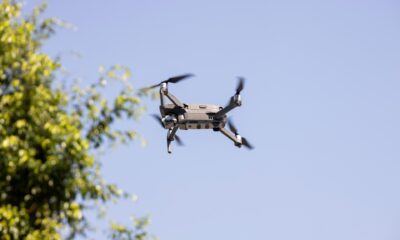Health
India Faces Critical Immunisation Challenge: 1.6 Million Zero-Dose Children Amid Global Decline
The recent WHO/UNICEF report on global immunisation coverage has highlighted a concerning trend: a decline in childhood immunisation rates. In 2023, approximately 21 million children worldwide missed out on essential vaccines. Of these, 14.5 million children did not receive any vaccines, a figure up from the previous year. India, with 1.6 million zero-dose children, stands as a significant contributor to this global challenge, second only to Nigeria.
The Global Landscape of Zero-Dose Children
The problem of zero-dose children is highly concentrated in ten countries: Afghanistan, Angola, the Democratic Republic of the Congo, Ethiopia, India, Indonesia, Nigeria, Pakistan, Sudan, and Yemen. These countries account for nearly 60% of the global total, reflecting deep-rooted issues such as conflict, poverty, and inadequate healthcare infrastructure.
In India, despite achieving a commendable 93% immunisation coverage for a cohort of 22.7 million infants, the presence of 1.6 million zero-dose children underscores severe inequities. These gaps are often found in marginalized and rural communities, where access to healthcare is limited, and cultural and logistical barriers are significant.
The ramifications of declining immunisation rates are profound. Unvaccinated children are susceptible to preventable diseases like measles, diphtheria, and polio, which can lead to severe health complications and even death. The resurgence of these diseases places immense pressure on healthcare systems, disrupts communities, and undermines decades of public health progress.
Furthermore, the COVID-19 pandemic has exacerbated these issues. The diversion of resources to manage the pandemic, coupled with lockdowns and healthcare service disruptions, has led to a backlog in routine immunisations. This has created a vulnerable cohort of children who are at increased risk of disease outbreaks.
India’s Unique Challenges
India’s challenge with zero-dose children is multifaceted. Socioeconomic disparities mean that while urban areas may have high immunisation coverage, rural and remote regions lag significantly. In these areas, healthcare facilities are often understaffed and under-resourced. Moreover, misinformation and vaccine hesitancy remain significant barriers.
Recent measles outbreaks in India illustrate the consequences of these gaps. In 2022, several states, including Maharashtra, reported a surge in measles cases and deaths, attributed to a decline in vaccination coverage during the pandemic. In 2023, the situation has not improved, with India reporting 1.6 million children missing the measles vaccine.
Addressing this crisis requires a comprehensive approach. Strengthening healthcare infrastructure in rural and underserved areas is crucial. This includes improving the supply chain, ensuring the availability of vaccines, and training healthcare workers. Additionally, robust public awareness campaigns are essential to counter misinformation and encourage vaccine acceptance.
Leveraging technology can also play a vital role. Digital platforms can help track immunisation schedules, send reminders to parents, and monitor vaccination coverage in real-time. Mobile health units can reach remote areas, ensuring that even the most inaccessible communities are covered.
Global cooperation is vital in tackling the decline in immunisation coverage. Organizations like WHO and UNICEF provide essential support through funding, resources, and technical assistance. Collaborative efforts between governments, non-governmental organizations, and the private sector can mobilize resources and implement effective immunisation programs.
A Positive Outlook
Despite the challenges, there are positive developments in some areas. The introduction of new vaccines, such as the HPV vaccine, has shown promising results. For instance, the share of adolescent girls receiving at least one dose of the HPV vaccine increased from 20% in 2022 to 27% in 2023, largely driven by strong initiatives in Gavi-supported countries.
However, more work is needed to achieve the Immunization Agenda 2030 targets, which aim for 90% coverage and no more than 6.5 million zero-dose children globally. Achieving these goals will require sustained efforts and a commitment to health equity.









































